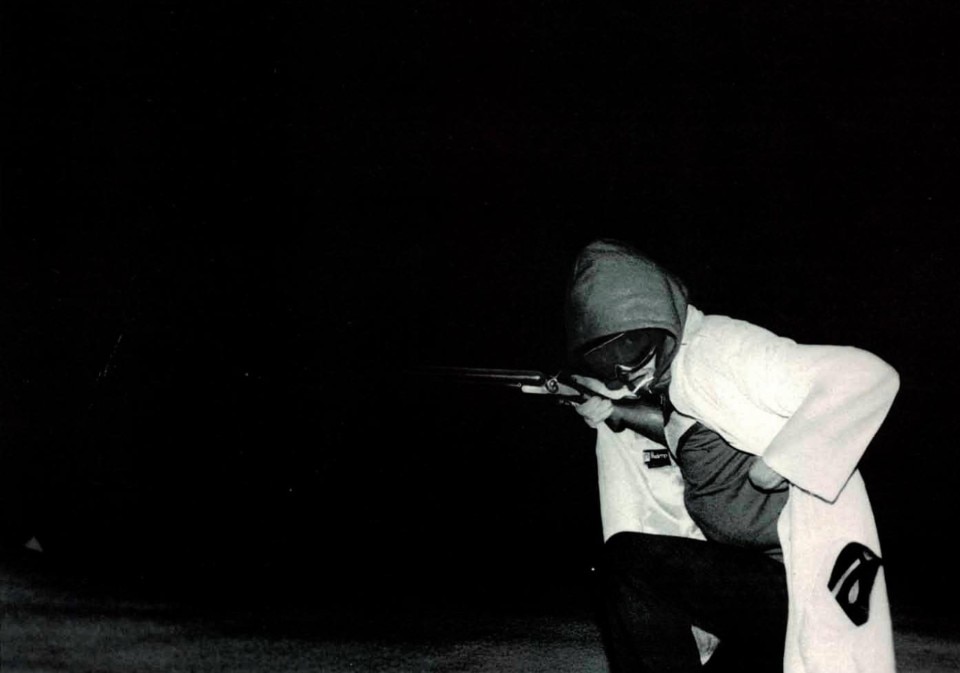January 1984. A man wanders around the streets of Martina Franca, Puglia, aboard a Fiat 500, at least twenty years old. He wears oversized sunglasses with mirror lenses, like a skier one would say, as are the boots on his feet. He collects old pieces of furniture, bed headboards decorated with religious images highlighting the place’s bond with the deepest Catholic tradition. Then, he covers them with graffiti. Even the 500 – gifted to him for the occasion – is totally spray painted.
The man is Rammellzee, a New York artist born in 1960 to an African-American mother from Queens and a father of Italian origins, who defines his stage name (his real name, it is rumoured, still is a secret to these days) as an equation: RAMM:ΣLL:ZΣΣ, where the letter M stands for magnitude, the two Ls respectively for longitude and latitude, and Z for the zinc bar.
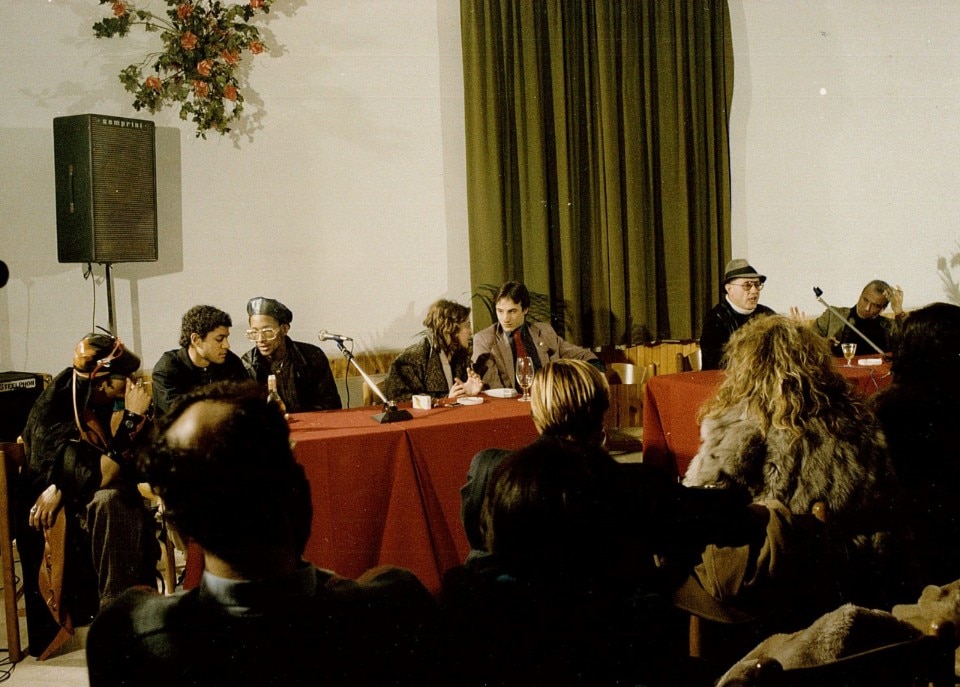
He is in Puglia for a residency at Studio Carrieri Noesi, where he will return regularly in the following months and years, as on the occasion of the group exhibition “The Emancipated Letter” together with Phase 2, Daze and Ero, and in dialogue with critic Achille Bonito Oliva, and for a show presented by Valeria Camerino as also reported on the pages of Domus 650.
Defining Rammellzee as a simple writer, however, would be limiting. Most of all, it would definitely not do justice to the cult that accompanies his persona, even if often erroneously overlooked by mainstream culture. As the title of a recent documentary on the artist says “Rammellzee: it’s not who, but what”. He can be considered a pioneer not only in the artistic field, but also for his broader legacy. A forerunner of the Afrofuturist philosophy, today a fundamental source of inspiration for the great contemporary African American creatives, as well as a key figure in introducing 1980s Italy to graffiti, Hip Hop and to an artistic sensibility so far unseen in the Belpaese.
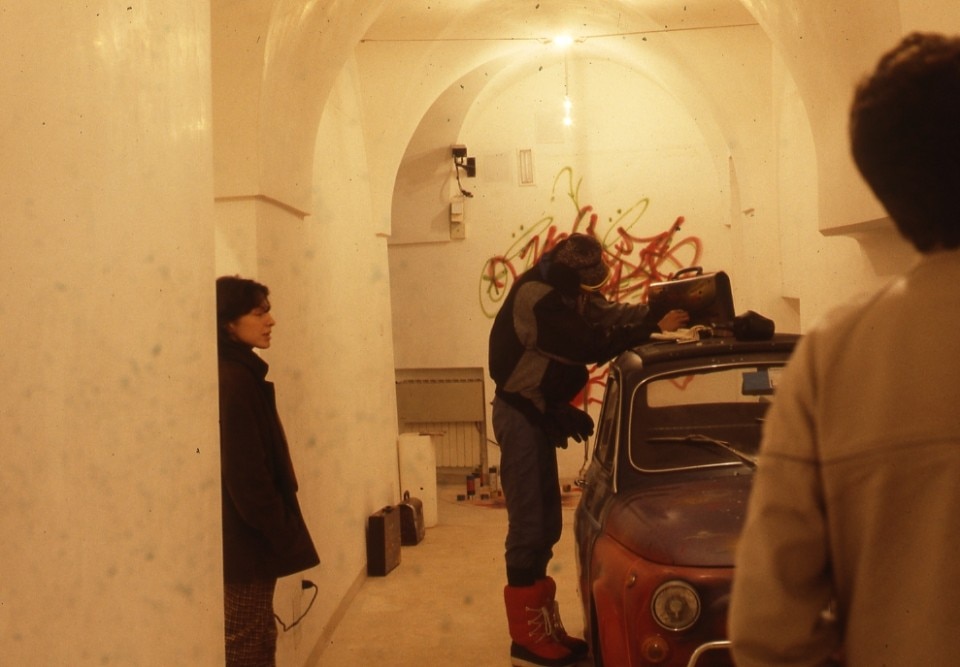
For many, his figure is, in fact, also linked to music. Beat Bop, his 1983 debut single produced by friend and colleague Jean-Michel Basquiat (who also illustrated the cover artwork) was included by Rolling Stone magazine in its 100 Greatest Hip-Hop Songs of All Times chart and today, in the original first pressing, it sells for over $500.
Gothic Futurism and Iconoclastic Panzerism
In the song, Rammellzee and K-Rob – another pivotal figure for Rap connoisseurs – respectively impersonate a pimp and a schoolboy, improvising in the recording room (at least as rumoured, and as also reiterated by K-Rob himself in a comment to the song’s video on YouTube) a ten-minute story about the status quo of the streets of New York in the early 1980s. It is from this exploration of urban reality that Rammellzee's philosophy emerges, based on two conceptual pillars: Gothic Futurism and Iconoclastic Panzerism.
The artist’s obsession with Gothic iconography was born when, still a child, he found himself watching an episode of Civilisations, a 1969 documentary series by the English historian Kenneth Clarke. The visual impact was so striking that between 1983 and 1986 Rammellzee even devoted himself to a tour of Italy, studying architecture and religious art in Florence, or Gerhard Richter's paintings in a Roman gallery.
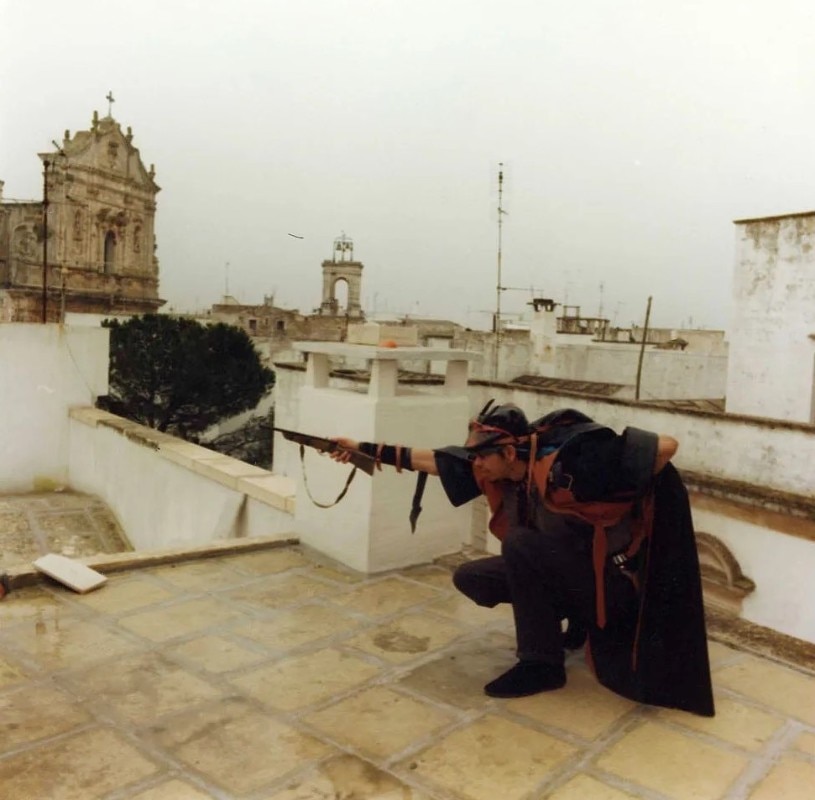
“Rammellzee telefonava dicendo che doveva andare via da New York, perché la polizia aveva ucciso un suo amico. Penso che fosse contento di venire a Martina Franca perché era di origini italiane, e poi perché con gli operai specializzati del posto realizzava opere che gli era difficile fare altrove,” ricorda Lidia Carrieri dell’omonima galleria pugliese.
All this, mixed with the imagery stemming from his favorite TV series, Battlestar Galactica, thus laid the foundations for an artistic current of which Rammellzee was both a prophet and a disciple.
A lecture in Milan
It is in a lecture held in May 1983 at the Faculty of Architecture of Milan, within the course of the architect and artist Corrado Levi, that Rammellzee introduces, in dialogue with the students and with the journalist and art critic Edit DeAk ( who in New York had liaised the encounter of the artist with gallerist Carrieri), Italy to its mythology made up of monks, manuscripts and warriors.
A vision that stems from the awareness that it’s during the Gothic era that what the artist calls the “bad deed” took place, that is, the “theft of letters by monks, bishops, kings, astrologers, mathematicians.” But also “the first forms of government control of the territory,” hence, “the first real crime”.
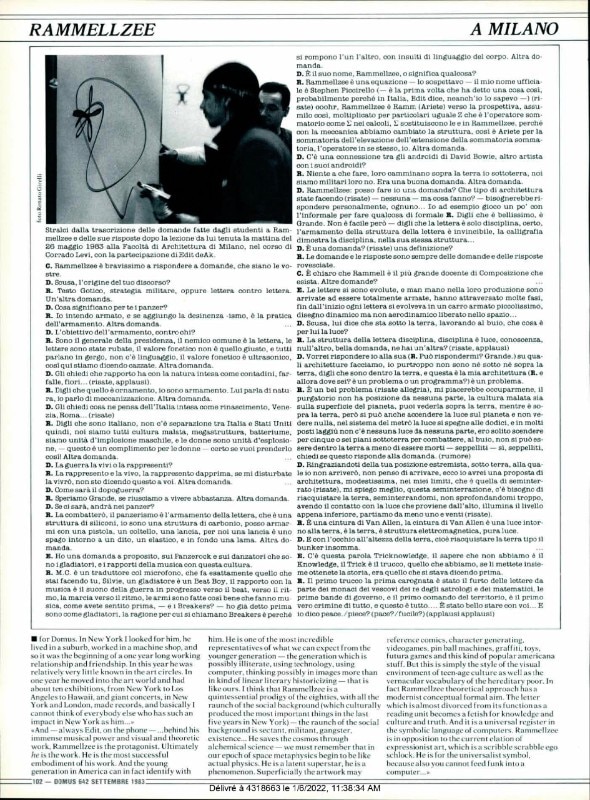
“Rammellzee would ring us saying he had to get out of New York, because the police had killed a friend of his. I think he was happy to come to Martina Franca because he was of Italian origins, and also because he made works with local artisans that it would have otherwise been difficult for him to do elsewhere,” recalls Lidia Carrieri of the Apulian gallery of the same name.
Shooting at the letter
The letter, plundered, thus becomes both a “common enemy” and an instrument to lead the fight, the so-called Iconoclastic Panzerism. As he explains, “panzerism is the armament of the letter”. Hence the eloquent title that Domus 646 dedicates to Rammellzee’s Milanese sortie: Shooting at the Letter. After all, the artist loves to perform disguised as an afrofuturist gangster, armed with a rifle.
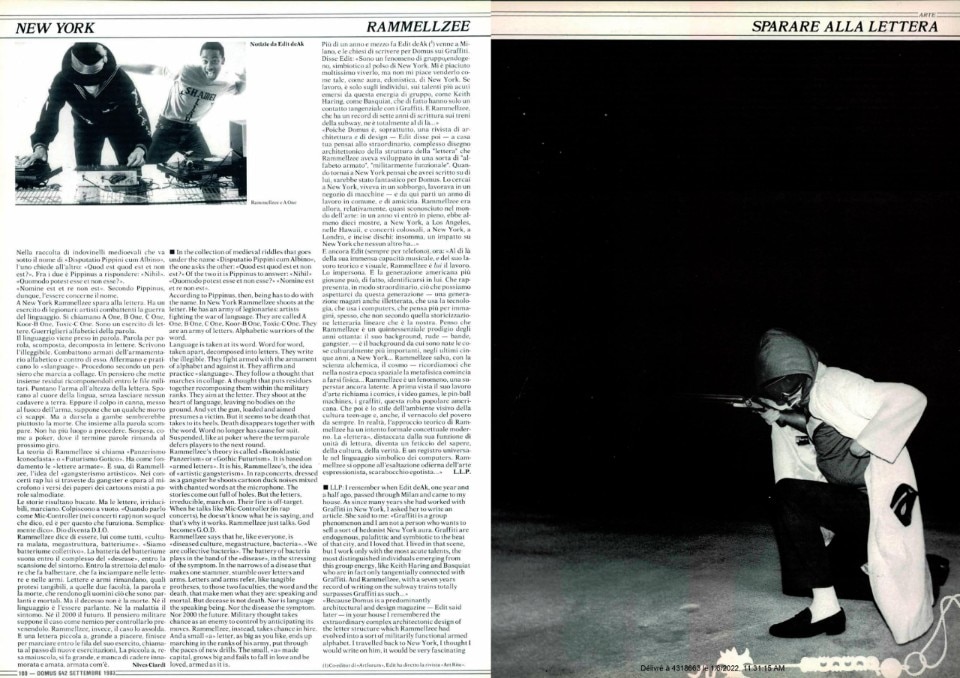
This fight is conducted through a handful of “alphabetic fighters of the word”, the legionaries-automatons who practice the so-called “slanguage” and to whom Rammellzee has entrusted names such as A One, Koor-B One, Toxic-C One. A war that is necessarily urban, to be carried out underground, where the writer “usually goes down for five or six floors. To fight”. That comes as no surprise, as it is there that Rammellzee sources the materials for his sculptures, and where the renewed attention of his generation for calligraphy was born, from the underground understood as the subway network. The artist, in fact, studies the wagons which are interpreted as “metro-troops” that cross the veins of the city.
This is why nature is seen as pure “ornament”, as opposed to his work which is “armament”, the natural outcome to the mechanization ingrained in the discourse of the urban culture of the 1980s.
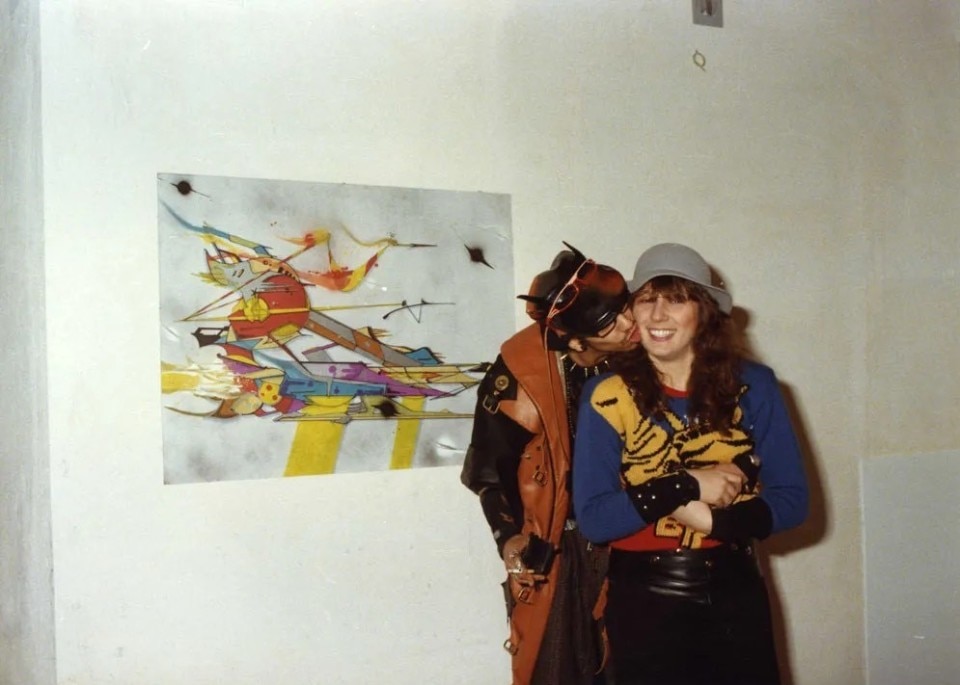
In the rebellion against the semantic system and linguistic superstructures, however, there is a dedication to the discipline that "is light", necessary to see in a dark environment such as that of the subway. For the writer, calligraphy is discipline, as is the structure of the letter. After all, discipline is a pillar of military culture, one of the main obsessions of Rammellzee and the foundation of his Panzerism.
Rammellzee the Afrofuturist visionary
In his bond with the urban environment we can also trace the centrality of Hip Hop music as an instrument of militancy. Edit DeAk herself explains in Domus 642 how “graffiti are palafittic and symbiotic to the beat of that [New York] city”, therefore to Hip Hop. The MC, like the writer, becomes a “translator with a microphone” who tears apart and renews the language with a futurist attitude, while the Breakers – the dancers who occupy the public space with their performances – are “gladiators”, the whose name comes from their “breaking each other, with body language insults”.
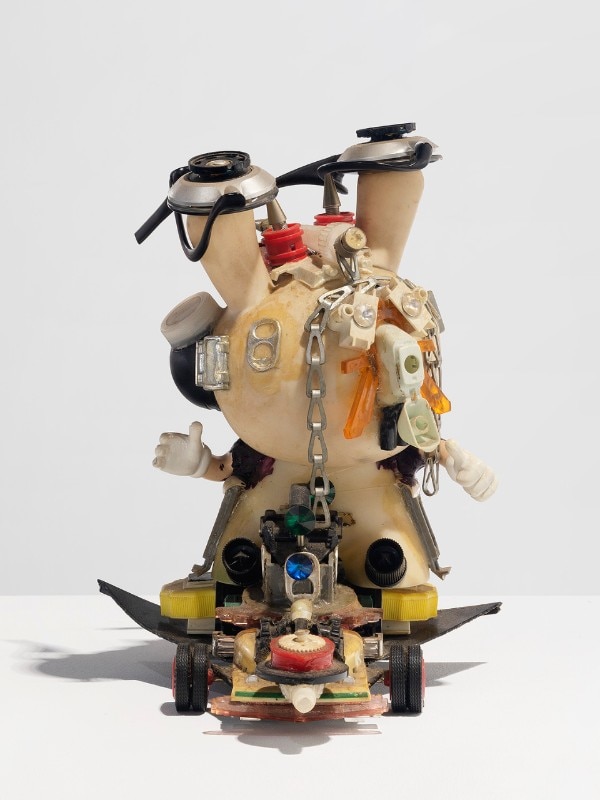
After all, the aesthetic and philosophical current of Afrofuturism coined in the early ‘90s by the author Mark Dery owes a lot to music, to figures like Sun Ra, Rammellzee or George Clinton with his Parliament and Funkadelic, whose covers illustrated by Pedro Bell have much contributed to define its iconography.
Rammellzee’s Gothic Futurism is also made up of dozens and dozens of costumes, the “Garbage Gods”, to be considered as proper works of art, which place Rammellzee in a performative dimension close to that of the histrionic British Queer icon Leigh Bowery.
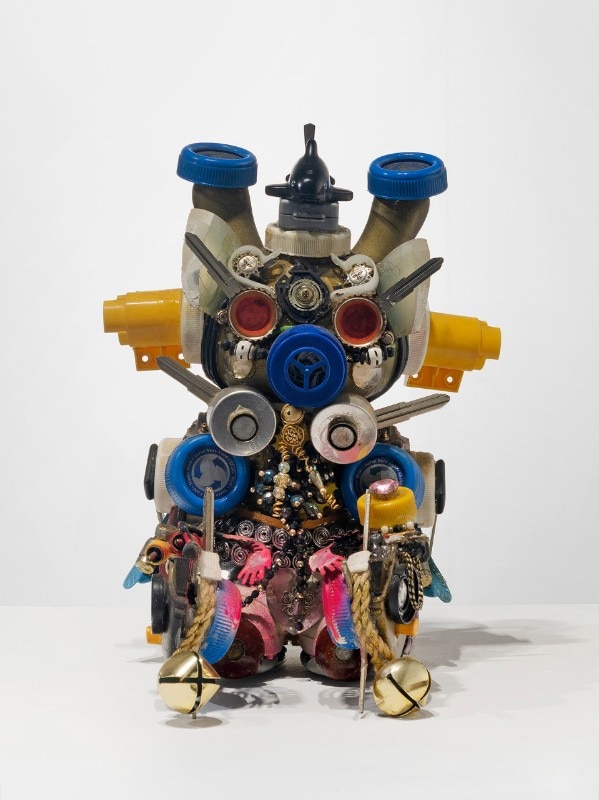
They equally draw inspiration from African tribal roots (here one of his most evident points of contact with the work of Basquiat), from medieval mythology and from pre-cyber utopias.
The topicality of Rammellzee
These all are traits that make Rammellzee’s iconography and philosophy very much current. On a purely aesthetic level, there is his proximity to the imagery of the digital subcultures of the Creepycore and the Dark Academia, engaged in a continuous mix of fantasy and cyber elements. But also his fundamental influence, as well as that of Basquiat, on what today can be considered the legacy of Afrofuturism, with artists such as Virgil Abloh, Beyonce, Jay-Z, FKA Twigs, Kanye West, The Comet Is Coming, or Travis Scott.
On a conceptual level, however, his research on the letter emerges today as a necessity dictated by a society in which the dominance of the visual element over the textual one is redefining new roles for language. We are left wondering whether Rammellzee would now still shoot the letters on social media. After all, they are environments almost as uncontrolled, adventurous and dark as the New York Subway of the Eighties.
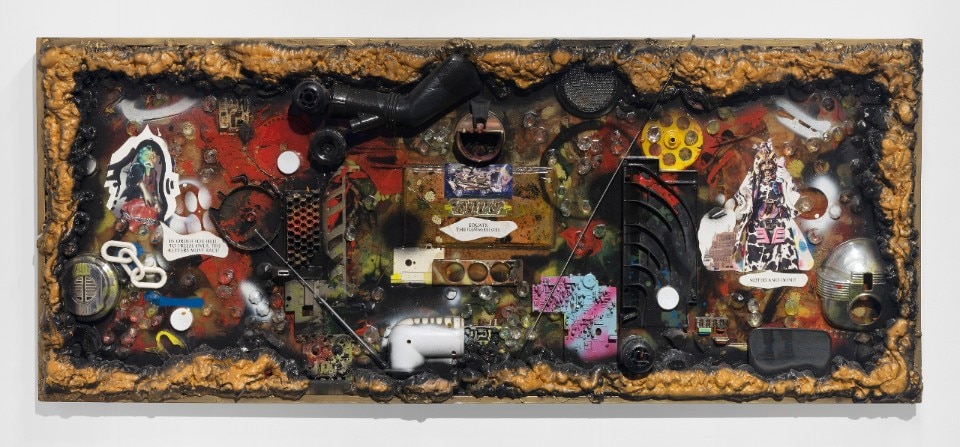
More than ten years after his death, the impression remains that although Rammellzee was a key figure in the American underground art of the ‘80s, his name often escapes when its protagonists, such as Keith Haring and Basquiat, are mentioned. In Italy, though, Rammellzee found a welcoming environment, with which the artist interacted much more than his colleagues of the time did.
“In Martina Franca, and more generally in Apulia, at the time there was not much difference between the town center and the suburbs,” explains Lidia Carrieri when questioned about the impact of the artist on the local community, “Then things changed, but the graffiti movement also fell into oblivion and THE graffiti artist became Basquiat, who had never set foot on the subway”.
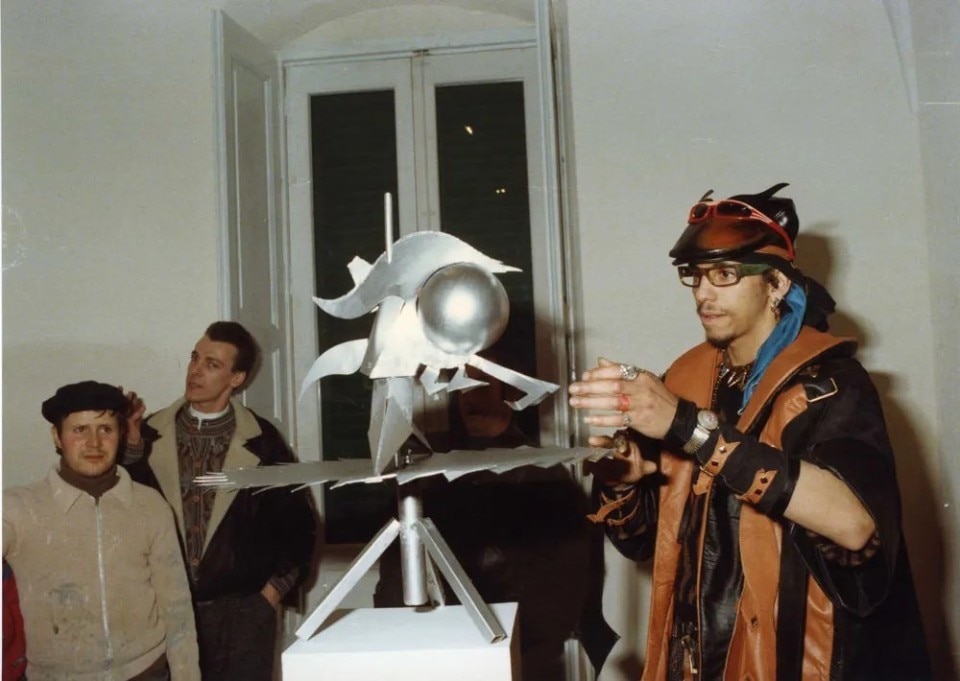
In a pre-Internet era, where the knowledge of new forms of artistic and subcultural expression from overseas belonged to the far-sightedness of critics and curators (see Levi, Camerino, but also Francesca Alinovi), Rammellzee’s Italian legacy remains of fundamental importance for laying the bases for the country’s own graffiti art and for the development of a national Hip Hop scene. Paraphrasing a recent article by Jacopo Bedussi for Vogue Italia, to a certain extent, in the mid-1980s Rammellzee was to Italy what Abloh represented for Milan in the last decade.
Opening image: Rammellzee, dressed as an Afrofuturist gangster, shooting at the letter. Photo Domus 642, February 1983


